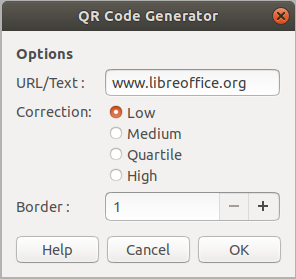![]()
In 2020, LibreOffice celebrated its tenth birthday. Two new major versions of the suite introduced a variety of new features, while minor releases helped to improve stability as well
(This is part of The Document Foundation’s Annual Report for 2020 – the full version will be posted here on the blog soon.)
The Document Foundation announced two major releases of LibreOffice in 2020: version 6.4 on January 29, and version 7.0 on August 5. In addition, 13 minor releases were made available over the year:
| RELEASE | DATE |
| LibreOffice 6.3.5 | February 20 |
| LibreOffice 6.4.1 | February 27 |
| LibreOffice 6.4.2 | March 19 |
| LibreOffice 6.4.3 | April 16 |
| LibreOffice 6.3.6 | April 30 |
| LibreOffice 6.4.4 | May 21 |
| LibreOffice 6.4.5 | July 2 |
| LibreOffice 6.4.6 | August 13 |
| LibreOffice 7.0.1 | September 3 |
| LibreOffice 7.0.2 | October 8 |
| LibreOffice 6.4.7 | October 22 |
| LibreOffice 7.0.3 | October 29 |
| LibreOffice 7.0.4 | December 17 |
Throughout the year, we held three Bug Hunting Sessions in preparation for new major releases. These typically took place on a single day between set times, so that experienced developers and QA engineers could help new volunteers to file and triage bugs via the IRC channels and mailing lists. The Bug Hunting Sessions for LibreOffice 7.0 were held on May 11 and July 6 – while the one for LibreOffice 7.1 took place on October 26.
LibreOffice 6.4
On January 29, LibreOffice 6.4 was officially released after six months of work. Developers at Collabora, CIB, Red Hat, SIL and other companies – along with volunteers – worked on many new features. For instance, a QR Code generator was added to the suite, making it easy to add QR codes (which can be read by mobile devices) to documents.

Hyperlink context menus were unified throughout the software to provide the following menu entries: Open Hyperlink, Edit Hyperlink, Copy Hyperlink Location and Remove Hyperlink.
Meanwhile, a new Automatic Redaction feature was added to hide classified or sensitive data in a document, based on text or regular expression matches, while the help system was reworked to provide faster and more precise search results – and many help pages were given localized screenshots for a better user experience.
TDF produced a video to explain and demonstrate many of the new features in LibreOffice 6.4. This was linked to in the announcement, and embedded into various web news websites that covered the release:
Please confirm that you want to play a YouTube video. By accepting, you will be accessing content from YouTube, a service provided by an external third party.
If you accept this notice, your choice will be saved and the page will refresh.
LibreOffice 7.0
Later in the year, on August 5, TDF released LibreOffice 7.0. OpenDocument, LibreOffice’s native open and standardised format for office documents, was updated to version 1.3 as an OASIS Technical Committee Specification. Important new features included digital signatures and OpenPGP-based encryption of XML documents, with improvements in areas such as change tracking, and additional details in the description of elements in first pages, text, numbers and charts. The development of ODF 1.3’s features was funded by donations to The Document Foundation, and the implementation was done by CIB and other developers in the ecosystem.
Additionally, support for Skia graphics engine was added thanks to sponsorship by AMD, and was set as the default on Windows, for faster performance. Skia is an open source 2D graphics library which provides common APIs that work across a variety of hardware and software platforms, and can be used for drawing text, shapes and images. Vulkan is a new-generation graphics and compute API with high-efficiency and cross-platform access to modern GPUs. Luboš Luňák (Collabora) did a large part of the work to support Skia.
Many other features were added as well, and there were a large number of compatibility improvements.

As with the previous release, TDF staff worked with the LibreOffice community to make a video (PeerTube version here) to demonstrate the new features:
Please confirm that you want to play a YouTube video. By accepting, you will be accessing content from YouTube, a service provided by an external third party.
If you accept this notice, your choice will be saved and the page will refresh.

I cannot download any version of LibreOffice on my Android A20 from Playstore. Samsung and Boost Mobile actually have no manual or sites to consult about the problem. Can you help? Or at least complain to them about this bad treatment of customers and vendors?
Hi Conrad, regarding LibreOffice for Android, please see: https://blog.documentfoundation.org/blog/2020/04/13/status-of-libreoffice-for-android-and-ios/ – And for further questions about LibreOffice on your specific device: https://ask.libreoffice.org